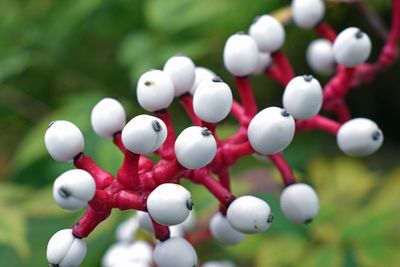Baneberry Information
In addition to doll’s eye, white baneberry (Actaea pachypoda) is known by a variety of alternate names, including white cohosh and necklace weed. This is a relatively large plant that reaches mature heights of 12 to 30 inches (30.5-76 cm.). Clusters of small, white flowers bloom atop thick, reddish stems in late spring and early summer. The rounded berries (which may also be purplish-black or red) show up from late summer to early autumn.
How to Grow Doll’s Eye Plant
Growing white baneberry doll’s eye plants is not difficult, and they’re suitable for growing in USDA plant hardiness zones 3 through 8. This woodland plant thrives in moist, rich, well-drained soil and partial shade. Plant baneberry seeds in late autumn, but keep in mind the plant may not flower until the second spring. You can also start seeds indoors in late winter. Either way, keep the soil moist until the seeds germinate. Often, white baneberry plants are available in garden centers that specialize in native plants or wildflowers.
White Baneberry Care
Once established, white baneberry care is minimal. White baneberry prefers moist soil, so provide water regularly, especially during hot, dry weather. A thin layer of mulch protects the roots during winter. Note: All parts of the baneberry plant are toxic, although birds eat the berries with no problems. For humans, eating the roots and berries in large quantities may cause severe mouth and throat pain, as well as dizziness, stomach cramps, diarrhea, headache, and hallucinations. Fortunately, the weird appearance of the berries makes them unappetizing for most people. However, think twice before planting white baneberry if you have young children.
